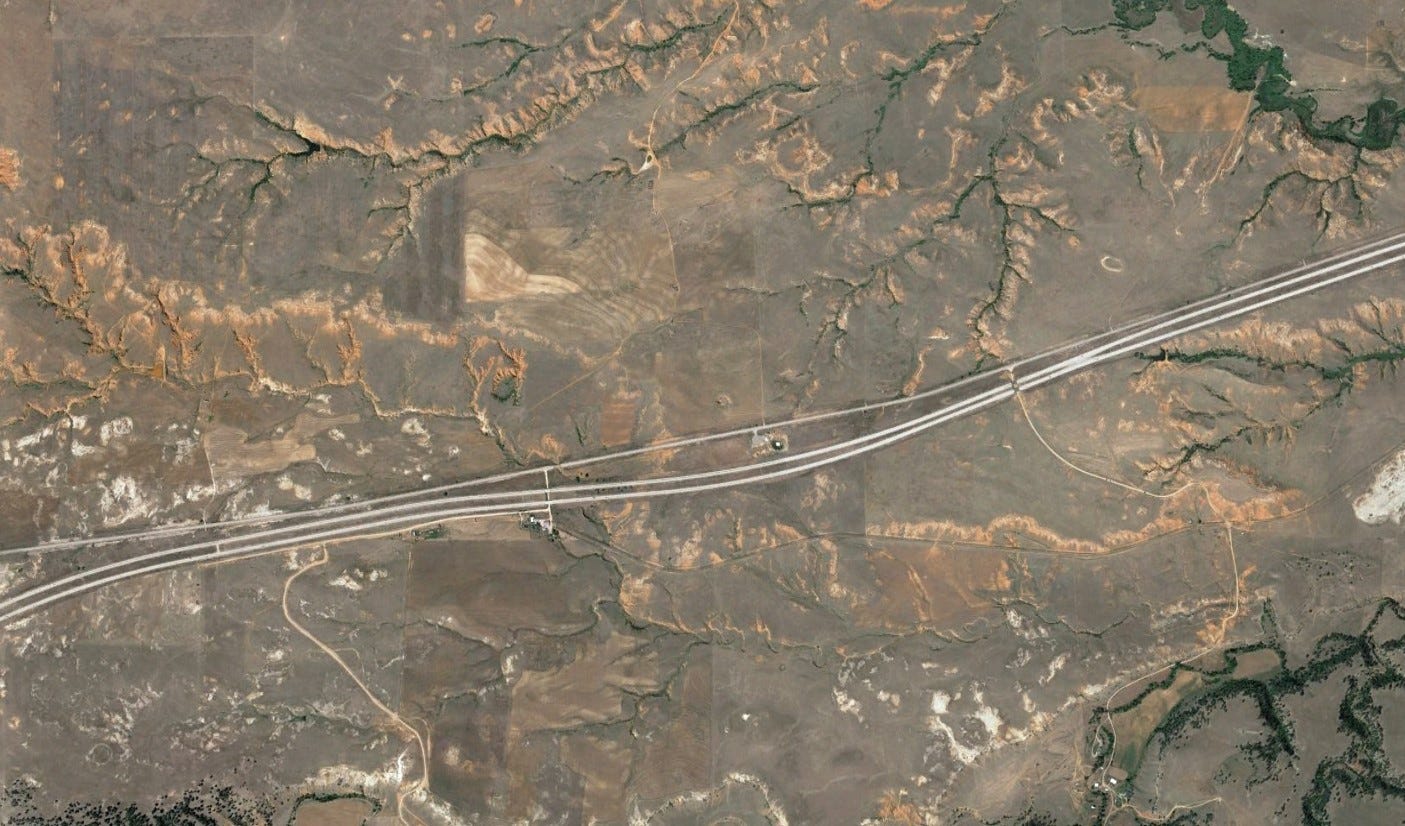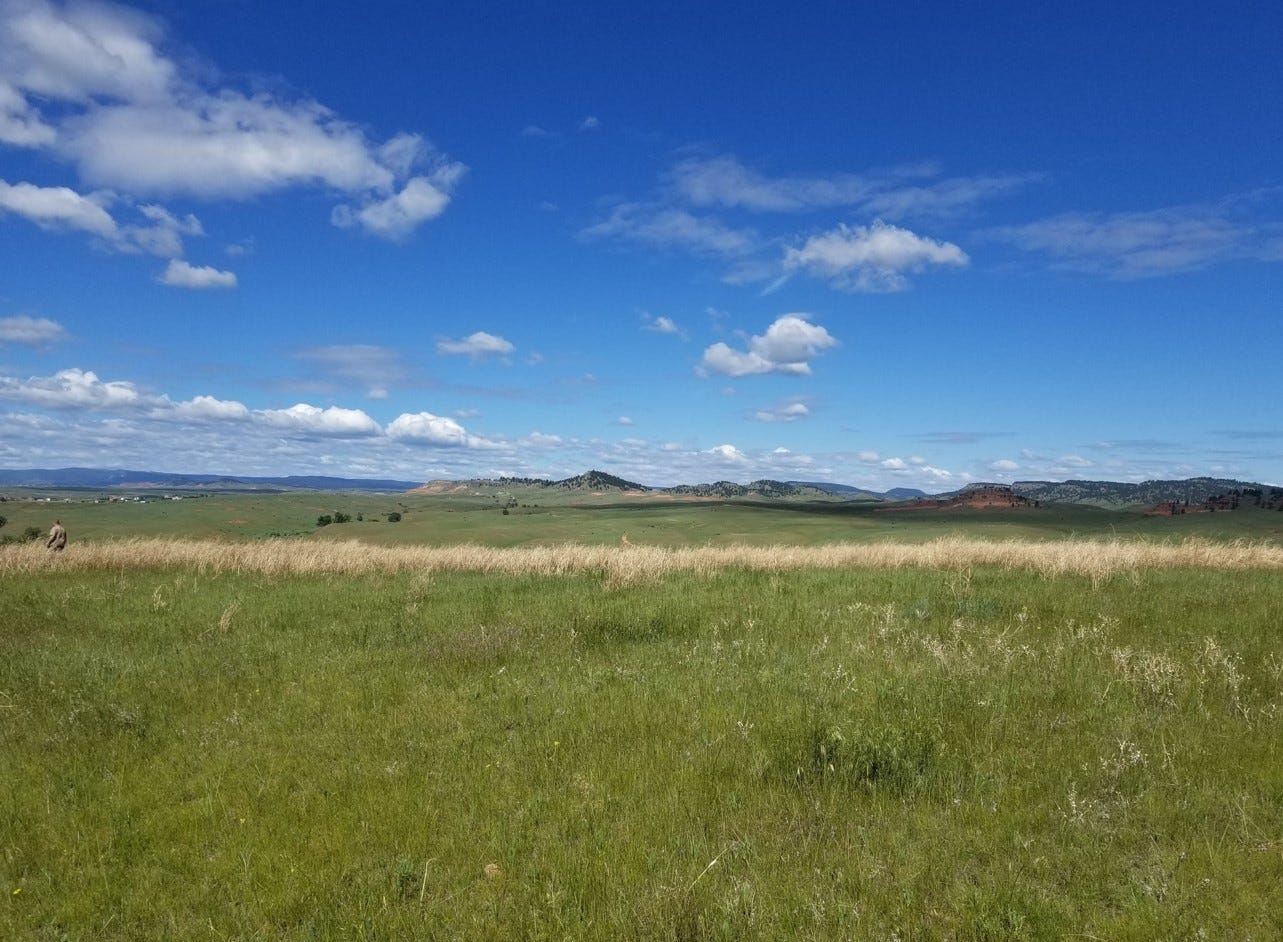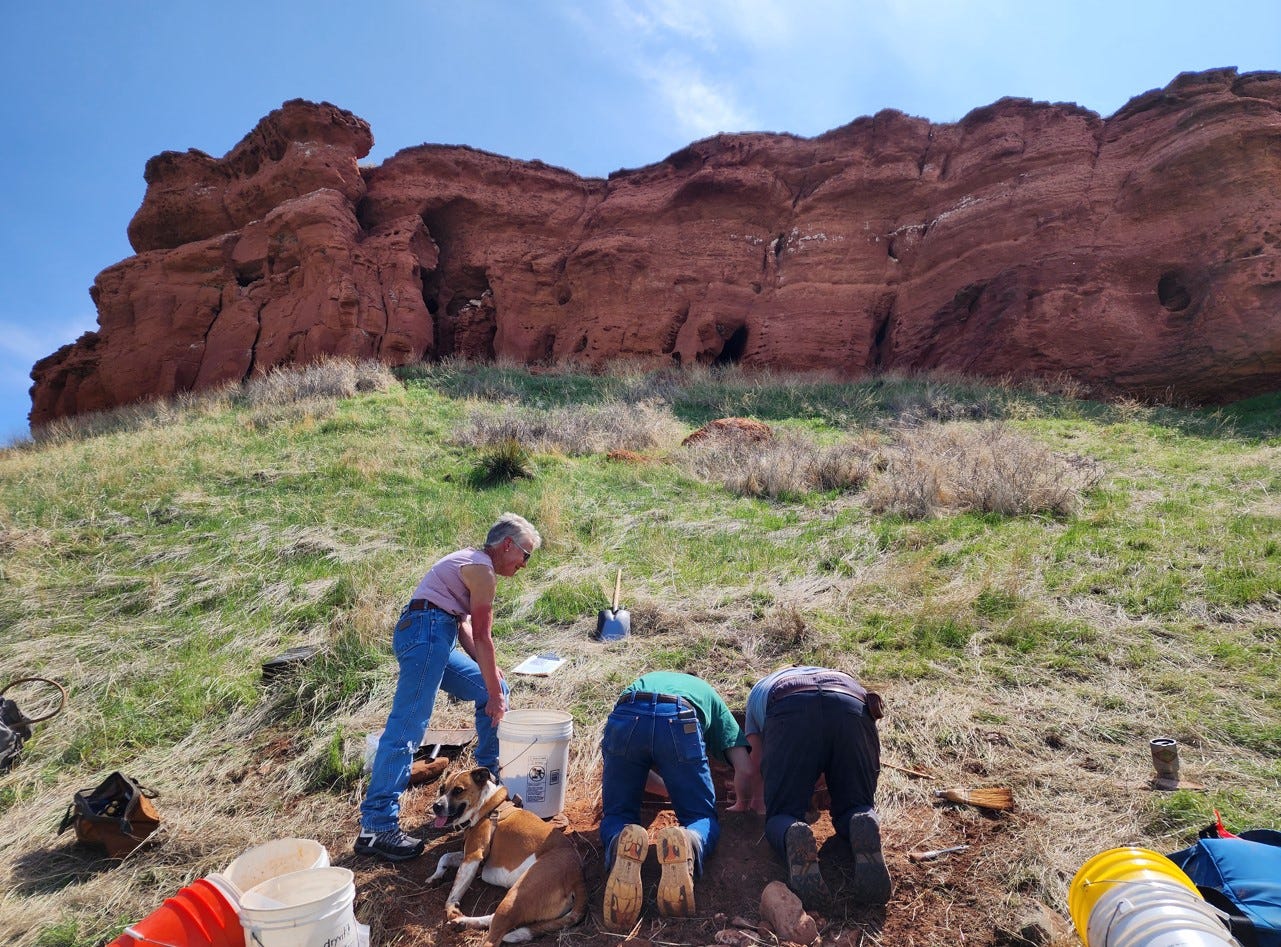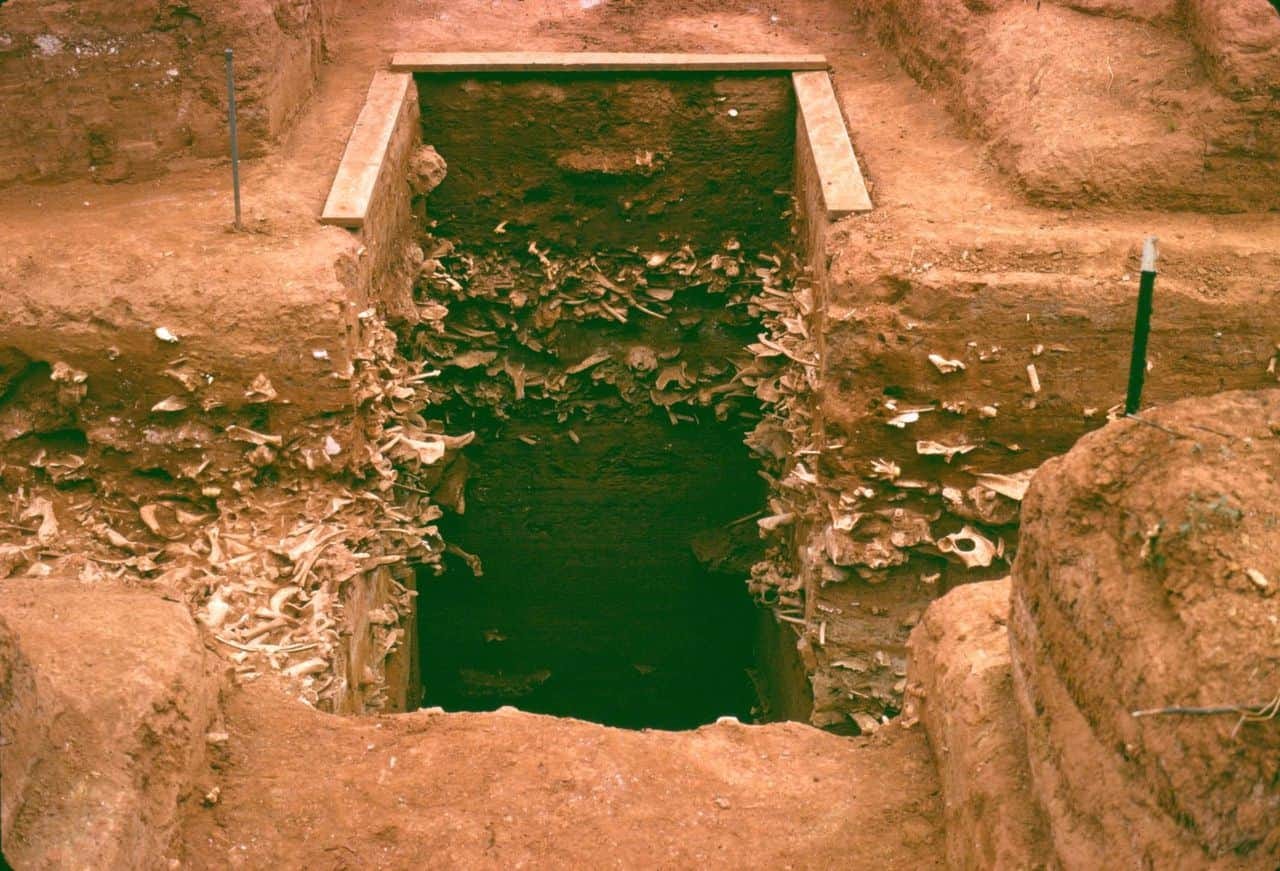I’m only a little bit of a desk jockey. I hole up in a flourescent cave during the depths of the Rocky Mountain winter to clean artifacts, write papers, grapple with databases, and, of course, write this newsletter. The other 3 to 5 months, I’m a field archaeologist. For the past 10 years, I’ve spent 60 to 80 nights a year in a camper or a tent, excavating archaeological sites and walking miles of transects in search of new ones. The brief Rocky Mountain summer is the busiest time of a Wyoming archaeologist’s year, when we frantically piece together field projects before the ground freezes and forces us back into the flourescent cave once more.
I don’t have the time or resources in the summer to maintain the more in-depth pieces I’ve been writing for this newsletter so far. So for the next 3 or 4 months, I’m transitioning this into a field journal documenting where I’ve been, what I found, and what I think about it. Kind of a travelogue that never leaves the Wyoming border combined with some more in depth looks into how we do field archaeology in this state. There will also be plenty of very pretty photos of Wyoming. Enjoy!
Beulah Bound
My office has been traveling the five hours from Laramie to the far northeast corner of Wyoming since at least 2016. Nestled at the northern end of the Black Hills, the town of Beulah (population 33) isn’t much more than a bar, a steak house, an RV park, and a combination Post Office/gas station/liquor store about 5 miles from the South Dakota state line. Beulah is most well-known for the annual ‘testicle festival’, where people come from across the region to sample the High Plains’ most distinctive culinary contribution: sliced and deep fried bull testicles.
It’s also a hotspot for bikers making their way to and from the famous Sturgis, South Dakota rally. Playing to the crowd, the local bar placed an above ground pool in their outdoor seating area. It sits vacant and waterless for most of the year until Sturgis, when the bar hires local girls to don bikinis and bartend from the pool, slinging long necks by the hundreds to thirsty bikers. It ain’t the beach, but Wyomingites make the most of the resources at hand.

Beyond it’s distinctive contributions to American culture, Beulah is one of the warmest, most accommodating environments in Wyoming, today surrounded by agricultural fields fed by the ample waters of Redwater Creek. The past was not so different. Bison flourished in the valley until they were extirpated by European expansion during the 1870s, the archaeological evidence for which buried deeply in a famous bison hunting site called Vore.

The Vore Site
Bison jumps are an iconic Plains Indian tradition. It’s often the first thing people ask me about when they find out I do archaeology in Wyoming, and if you know anything about Great Plains archaeology, you know about bison jumps. The imagination runs wild recreating the scene, hundreds of bison stampeding off a cliff, collecting in a grotesque, writhing pile of meat at its base. Excited bands of Plains Indians converging on the kill in what must have been one of life’s great spectacles for those living on the High Plains before European contact.
The most famous bison jump in Wyoming, and perhaps one of the most well-known in the world, is the Vore Buffalo Jump, located just several miles west of Beulah. Geologic studies conducted in preparation for interstate construction in the 1960s discovered a deeply-buried bone deposit in the bottom of sinkhole. Some political wrangling by the State Archaeologist, George Frison, protected the site from destruction and resulted in a slight rerouting of the I-90 corridor to avoid the site, a lasting legacy still visible today.

Excavations in the bottom of the sinhole at Vore by Charles Reher revealed 22 bison jump events spanning roughly 1550 to 1800 AD, ceasing shortly before continuous European contact in the region. Each stratified bone layer was separated by layers of sediment washed into the sinkhole, neatly segregating the bones and artifacts into discrete events for archaeologists to parse hundreds of years later. Bison jumps are common on the northern Plains, but the piles of bone they leave behind (called ‘bonebeds’ by archaeologists) are oftentime a jumbled mess, combining thousands of years of activity into a single large pile. The magic of Vore is its neatly preserved deposits, from which archaeologist can determine with great fidelity the sequence of hunting events that occurred at the site over several human generations.
Since Vore was investigated in the 1970s, Beulah has been closely associated with the site, the local (and highly recommended!) steakhouse even naming itself “The Buffalo Jump”. You can visit the site today, where it is operated by a private Foundation that hosts tours of the site all summer. But one question that has lingered among archaeologists since the 1970s is whether Vore was a one stop shop for bison hunting in the region or whether there might there be other jumps scattered across the Beulah landscape lying undiscovered? In 2017, our Office got the answer from a private landowner near the Vore site who suspected he might have another bison jump on his land.

Another Beulah Bison Jump
When I got this job in 2019, I inherited a few incomplete projects from my predecessor, one of which a newly discovered bison jump near Beulah. The Courchaine family had suspected for years that the large cliff on their ranch might be a bison jump, though they’d never found any bones or arrowheads at its base to prove it. Some archaeological testing in 2017 confirmed the presence of a thin layer of bison bone at the foot of the cliff and subsequent excavations revealed more. The Courchaine Bison Jump appears to be a single use event and is similar to other bison jumps in Wyoming: some simple cairns placed in a V-shaped configuration with the pointy end leading toward a cliff precipice, that precipice chosen because it is obscured from view until one is within several feet of it, and a pile a bone at its base.

Excavating that pile of bones must be a real hoot right? Some think so. Charles Reher collected 80,000+ bones from the Vore site, no doubt wearing a smile the whole time. Well I am not one of those archaeologists. In fact, I think bonebeds are a pain in the ass. It’s a pile of tens of thousands of extremely fragile bones interspersed with a rather sparse assemblage of other artifacts like stone knives or arrowheads. It takes days to make progress and when you do, you are saddled with the task of having to stabilize and curate the bone for time immemorial, a process that takes time, money, and an enormous amount of space. So when I inherited a bison jump from my predecessor, I wasn’t too psyched to dive right in. But I picked up where he left off regardless, and it’s turned into a really interesting project.

One great thing about bison jumps is that you inherit at least two archaeological sites in one because when people jumped bison, they needed to live somewhere nearby to facilitate processing the many products of the hunt, from drying meat and organs to tanning hides. Thus, campsites containing the remnants of tipis, hearths, stone tools, and bison bone are often found closely associated with bison jumps, within around a half mile. So rather than spend a ton of time and money excavating another bonebed (see my thoughts on that here), I chose instead to find the associated campsite. That turned out to be more difficult than anticipated.
We started in the most obvious place to look: the broad, recently-plowed terraces between the jump bonebed and Redwater Creek. It was perfect. An ample source of water near the jump bonebed but not too close to be overwhelmed by the inevitable stench it would produce in just a few days’ time. But nope. No artifacts there. We got more serious and placed several dozen auger probes into the floodplain to screen for artifacts, thinking maybe the campsite was buried and obscured from surface visibility. We didn’t find any evidence for campsite artifacts this way either. We tested a couple hearths at least a half mile away from the site and found out they were too old to be associated with the jump. We excavated around some weird, weathered bone and found out they were fossils. Nearing the end of our site exploration in 2023, after 3 years of looking for this thing, I had pretty much given up.
Luckily, one of my crew has less respect for fences than me, and decided to cross a fence by the jump drivelines to look in a place I had never looked. Not 10 feet on the other side, he ran into a stone circle (aka, tipi ring), a hallmark of Plains Indian archaeology. Jumps and stone circles go together like beans and rice. Stone circles are the remnants of tipi foundations, tipis were made out of bison hide, and bison jumps were one of the primary sources of hide for Plains Indians. On a large scale, the Plains Indian tipi and bison jump are tighly co-associated both spatially and temporally across the Great Plains.
One stone circle turned into at least 20, and all of a sudden we had a campsite on our hands. And far too big of one to tackle during the half day of wandering around we had this year. So next year we’ll return to Beulah once more to FINALLY document the Courchaine Bison Jump campsite. Maybe next time we’ll plan our trip around the testicle festival.





I have tried them all, and boar testes (mountain oysters) are best, especially with scrambled eggs.
Remove the epididymis, so technically not a testicle. Just saying. See you in Beulah.